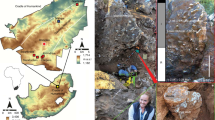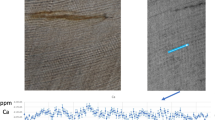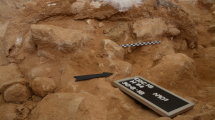Abstract
THE type mandible of Telanthropus capensis was found in the Swartkrans excavation in April 1949 by me. Dr. R. Broom and I published a preliminary description in this journal1. In this note the opinion was expressed that this form is “intermediate between one of the ape-men and true man”. This conclusion has been somewhat sceptically received by most workers, who consider, in view of the fact that the same excavation has yielded numerous remains of the ape-man Paranthropus crassidens, that the specimen is more likely to be a small and slightly aberrant P. crassidens than a new type of man.
This is a preview of subscription content, access via your institution
Access options
Subscribe to this journal
Receive 51 print issues and online access
$199.00 per year
only $3.90 per issue
Buy this article
- Purchase on SpringerLink
- Instant access to full article PDF
Prices may be subject to local taxes which are calculated during checkout
Similar content being viewed by others
References
Broom, R., and Robinson, J. T., Nature, 164, 322 (1949).
Broom, R., and Robinson, J. T., Transvaal Museum Mem. No. 6, 110 (Pretoria, 1952).
Robinson, J. T., Ann. Transvaal Museum (in the press).
Author information
Authors and Affiliations
Rights and permissions
About this article
Cite this article
ROBINSON, J. The Nature of Telanthropus capensis. Nature 171, 33 (1953). https://doi.org/10.1038/171033a0
Issue date:
DOI: https://doi.org/10.1038/171033a0
This article is cited by
-
Die geographische Verbreitung der fossilen Hominiden (au�er Eusapiens) nach neuer Gruppierung
Die Naturwissenschaften (1955)



